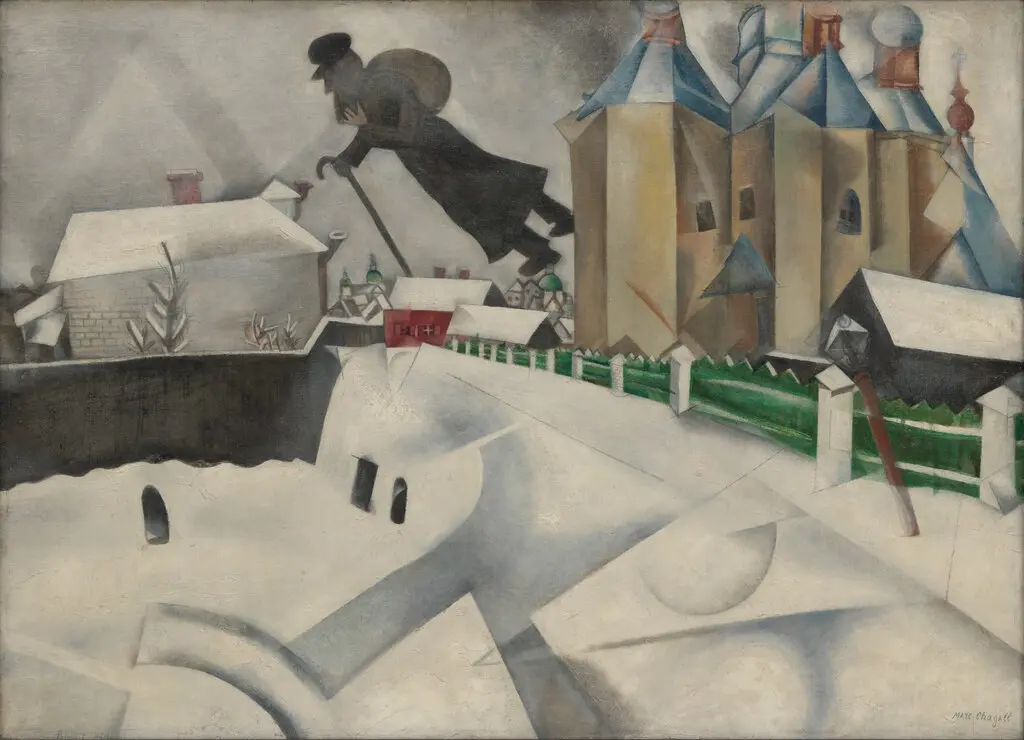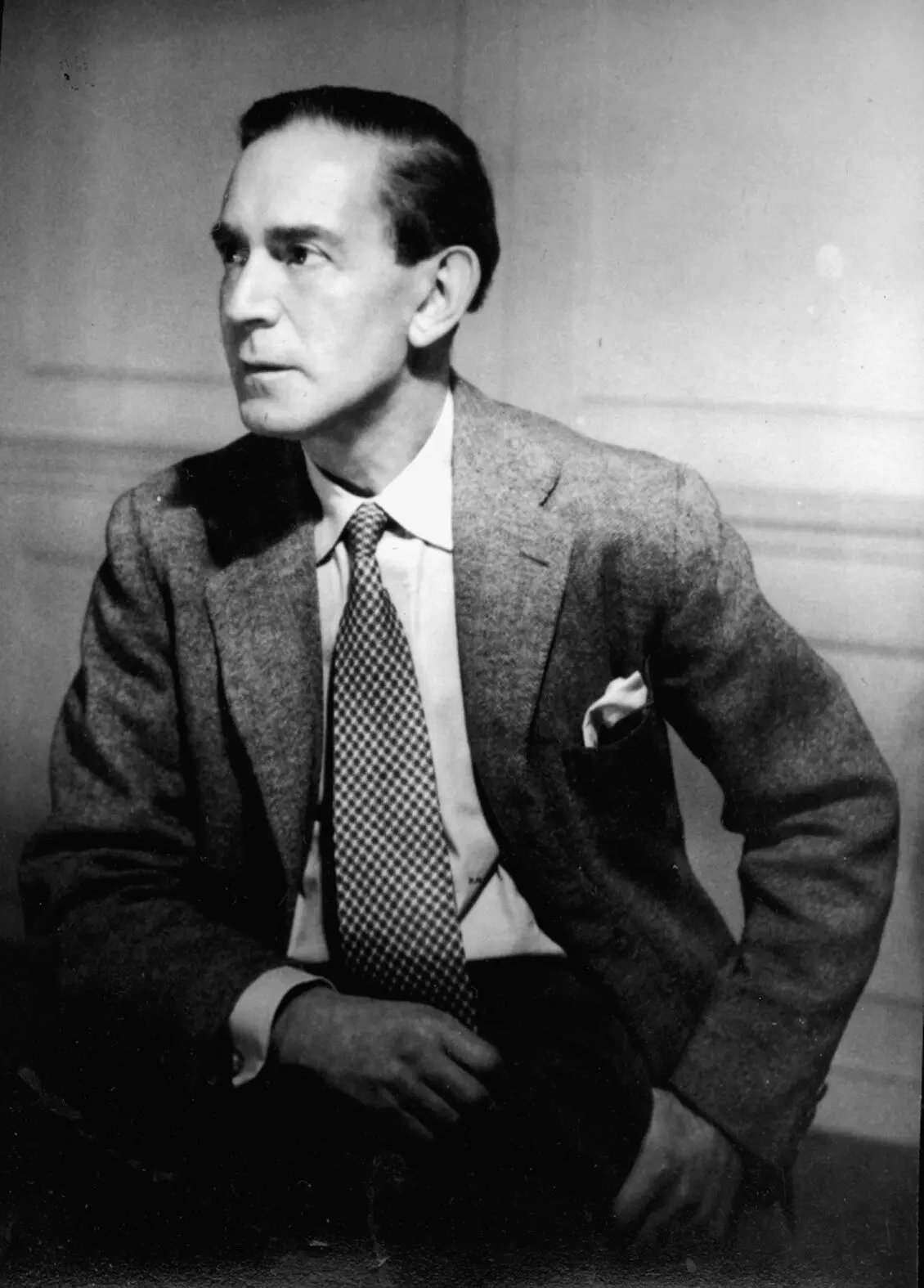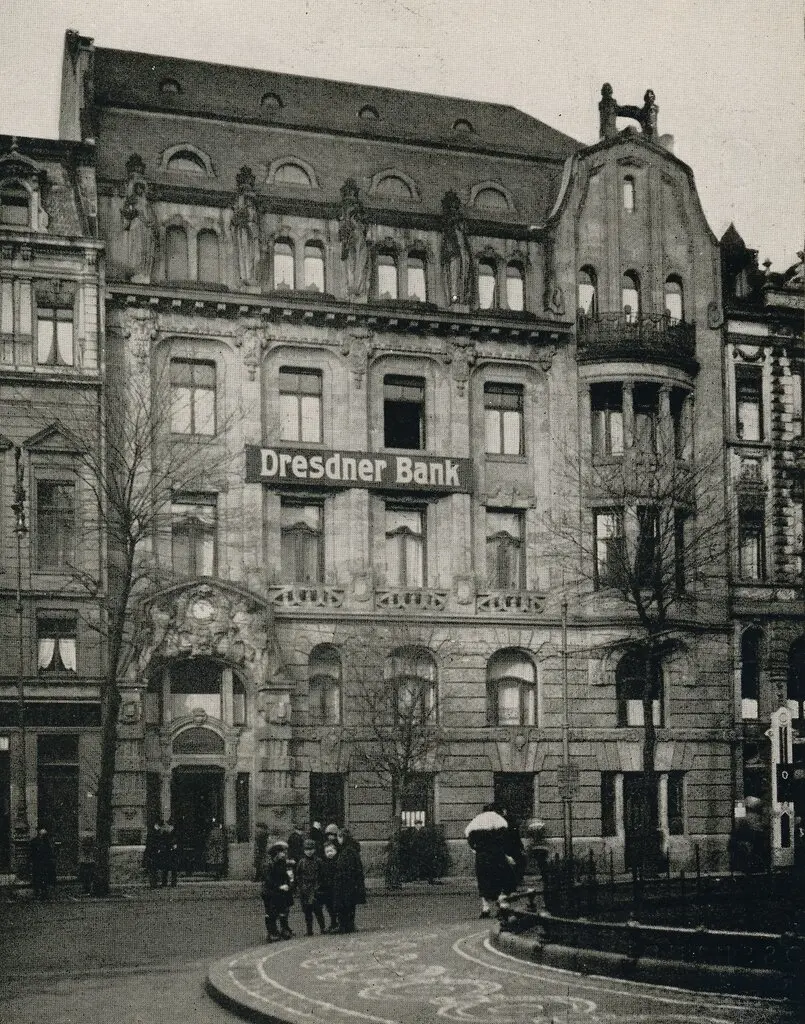News:
Quietly, After a $4 Million Fee, MoMA Returns a Chagall With a Nazi Taint
By Graham Bowley
The museum returned the painting three years ago to the heirs of a gallery once led by a German Jew. But one heir called the payment to MoMA included in the deal “unreasonable.”
“Over Vitebsk,” by Marc Chagall, one of several images he created of the village, now in present-day Belarus, where he once lived.
For years, “Over Vitebsk” occupied a central place in the collection of the Museum of Modern Art, which spoke of Marc Chagall’s painting of his hometown in the Russian empire as an important part of its holdings.
The work, by a Jewish artist, with a Jewish theme, had been previously owned by a gallery run by a Jewish dealer in Germany at the time of the Nazi takeover. Though its history was murky, and included a transfer of the work to a German bank during the Nazi era, the museum held the painting for decades, indicating it was confident it had good title.
But MoMA acknowledged last week that three years ago, without public announcement, it had changed its mind and returned the painting to the heirs of the German gallery.
The return of the Chagall is one of the quirkier art restitution cases by a museum in recent years, in part because of the financial agreement that accompanied its return to the heirs, who sold it last year for $24 million.
MoMA, which acquired the work in 1949, received $4 million in compensation for giving it back under an arrangement negotiated by a restitution company that represented the seven heirs.
One of the heirs and that company, Mondex Corporation, are now engaged in a court fight over the company’s fee, $8.5 million, according to court papers.
In an interview, that heir, Patrick Matthiesen, the son of the principal owner of the German gallery, Francis Matthiesen, said the journey to recovering his father’s artwork had been far from pleasant.
Francis Matthiesen, the principal owner of the German gallery that once owned the Chagall, in 1960. In the 1930s, he also handled major sales of art from the Hermitage by the Soviets
He has argued in court papers that Mondex is not due the fee because it breached its contract during the negotiations with MoMA by doing things like arranging for the “unreasonable” $4 million payment to the museum without the heirs’ approval. Matthiesen, who operates his own London gallery, says he is also upset that the museum, until last week, had not publicly announced what it had agreed to use the payment for — establishing a provenance research fund in his father’s name.
“They fought tooth and nail to the last ditch on giving this back,” Matthiesen said of MoMA in an interview.
Last week, when asked to discuss the previously undisclosed return of the painting, MoMA declined to address questions. Instead, the museum released a short statement in which it said it had “collaborated on extensive provenance research on the painting” with the heirs, acknowledged receiving a payment from them and said the money was being used to support a provenance research fund named after the elder Matthiesen.
Mondex has said in court papers that it followed all the terms of the agreement it struck with the heirs. James Palmer, the company’s founder, said in an interview that he viewed the return as a fair settlement for all the parties involved.
Chagall’s painting, a lyrical and somewhat mystical work, is part of a series he began after his return from Paris in 1914 to Vitebsk, his hometown in present-day Belarus. It depicts an elderly beggar in a snowy landscape, carrying a sack on his back and holding a stick as he floats over rooftops and a cathedral dome in Vitebsk.
Some experts have viewed the figure as a representation of the Yiddish expression for a beggar walking from door to door, a phrase translated as “he walks over the houses.”
But Matthiesen’s London gallery, which sold the painting last year to a European collector, suggested instead that the figure represents “the exodus from Tsarist Russia — a displaced and dispossessed émigré among the several hundred thousand who had left and would continue to leave Eastern Europe in the days of Chagall’s childhood.”
The Dresdner Bank in 1925. The circumstances of the transfer of the Chagall painting to the German bank in 1934 were at the heart of the restitution negotiations with MoMA
The German gallery that once owned the painting was established by Francis Matthiesen in Berlin, and it had played a role in handling the sales of works from the Hermitage by the Soviets in the 1920s and 1930s. But as the Nazis took power, Francis Matthiesen fled Germany in 1933 and the gallery was forced to close in 1939.
MoMA, in its records on its website, said the gallery had turned over the Chagall painting to a major German bank in 1934 “in exchange for debt reduction.” Dresdner Bank, which came to hold the work, prospered during Hitler’s regime and helped to finance the construction of the Auschwitz death camp, which the bank later acknowledged in a 2006 report by scholars it had hired.
But a provenance research expert, who worked for MoMA for several years, said in a 2017 book she wrote on the Dresdner Bank’s role in the art market, that the available records did not contain any evidence that the Chagall had been seized under duress. Instead, the book by Lynn Rother, “Art Through Credit,” reported that the gallery had given the painting to the bank to help pay off a loan after lengthy negotiations. Those negotiations, the book said, had been led by a Jewish member of the bank board.
More recently, Mondex presented additional evidence to MoMA in an effort to show that the transaction had been unfair. Palmer, the company founder, said in an interview that the fair market value of the Chagall and other artworks handed over by the gallery to the bank far exceeded the outstanding value of the gallery’s loan.
“Therefore, it was effectively a despoliation and therefore should be restituted,” Palmer said in an interview. “The Nazis took advantage of the situation,” he added.
In 1935, the Chagall was among thousands of artworks sold by Dresdner to the Prussian finance ministry for inclusion in Berlin’s museums. Many of the works had been acquired by the bank as collateral for loans. Some have remained with museums in Berlin. The organization that oversees those museums, the Prussian Cultural Heritage Foundation, has said it is researching whether any of the works should be considered Nazi looted artworks since their original owners had been Jewish.
The Chagall, however, was not kept, but sold and brought to the United States where a New York gallery sold it to MoMA as the museum worked to expand its collection under the guidance of its founding director, Alfred Barr.
The museum described it as one of five major Chagall paintings in its collection during a 1957 exhibit to celebrate Chagall’s 70th birthday. It had been in MoMA’s collection for decades when Mondex approached Patrick Matthiessen in 2018 offering to help him find works that had once belonged to his father’s gallery. By that time, the museum had listed the Chagall in its Provenance Research Project, which investigates the ownership history of some works, and Rother, its researcher, had cited the painting in lectures about the challenges of such research.
Mondex later sued Matthiesen, asserting he had not turned over 39 percent of the value of any recovered art, as outlined in their contract, according to court papers filed in Toronto as part of their legal battle.
Matthiesen has countersued. His lawyers said in court filings that Mondex had breached its agreement, in part by excluding the heirs from the negotiations with MoMA and agreeing to the $4 million payment.
Palmer in an interview defended the museum, saying it should be credited for accepting the evidence presented during the negotiations, which were mediated by Kenneth R. Feinberg, the lawyer who administered compensation for the victims of the Sept. 11 attacks.
Palmer said the deal with MoMA resembles settlements in other restitution cases where heirs of a looted work agreed to split the proceeds from a sale with owners who unwittingly purchased it years later.
“You have a case which is not black and white,” he said. “It makes perfect sense given some of the questions that can’t be resolved.”
But Raymond J. Dowd, a lawyer who has handled claims for looted art, including a case involving MoMA, said it was unusual for a museum to be part of a settlement where it received such a large payment as part of the restitution agreement.
“It’s anomalous,” he said.
https://www.nytimes.com/2024/02/12/arts/chagall-moma-return-over-vitebsk.html


